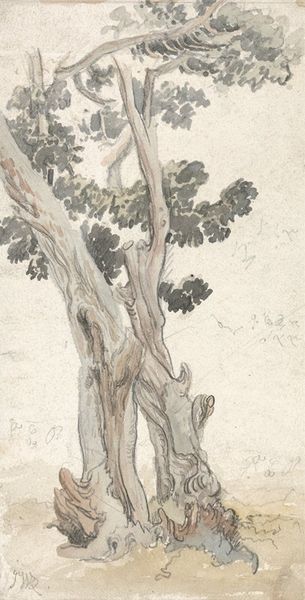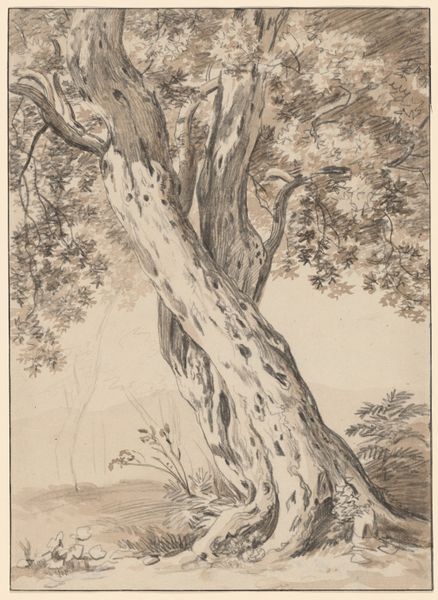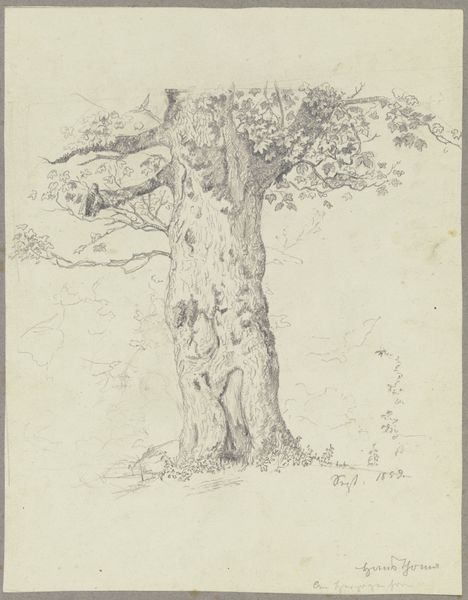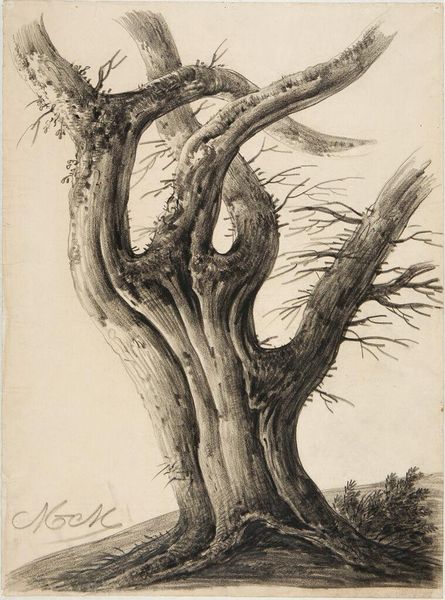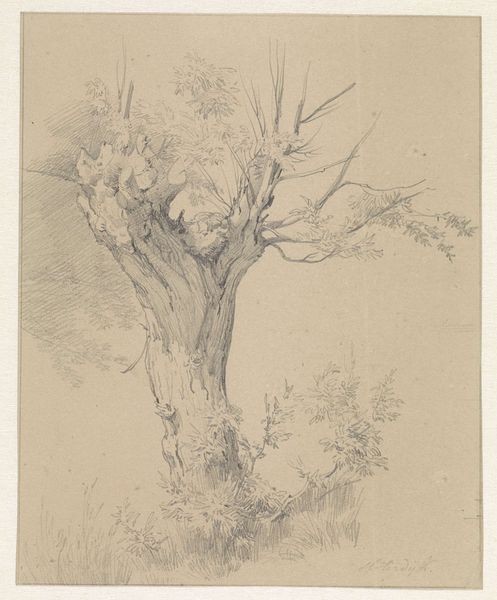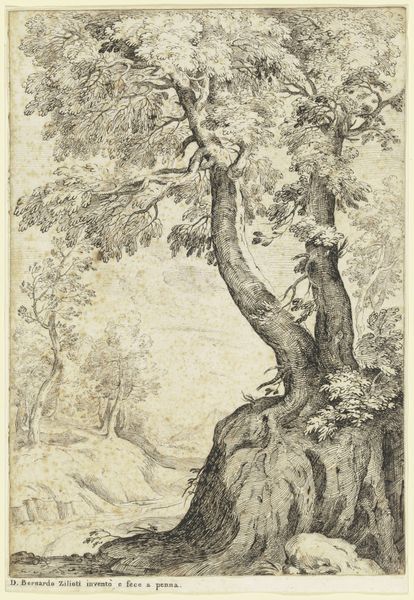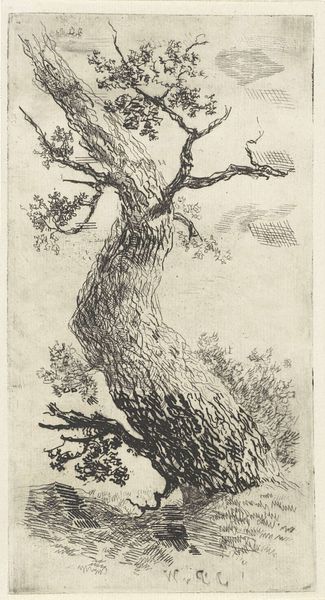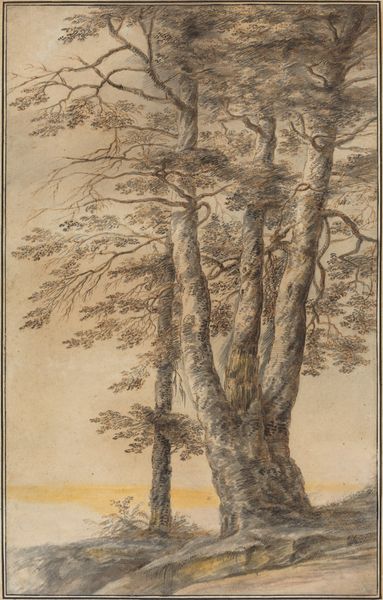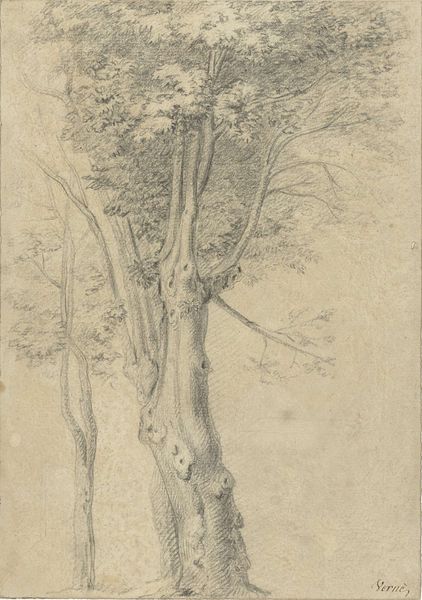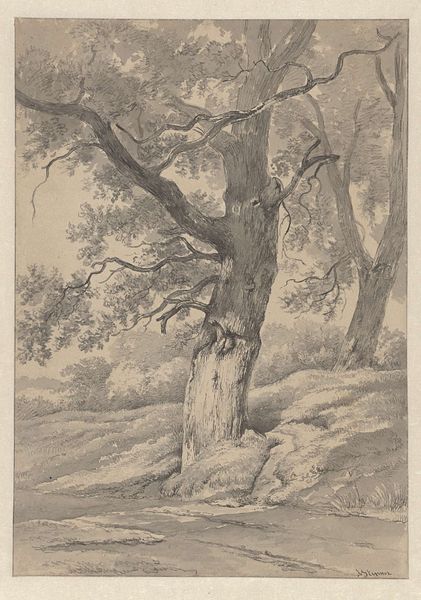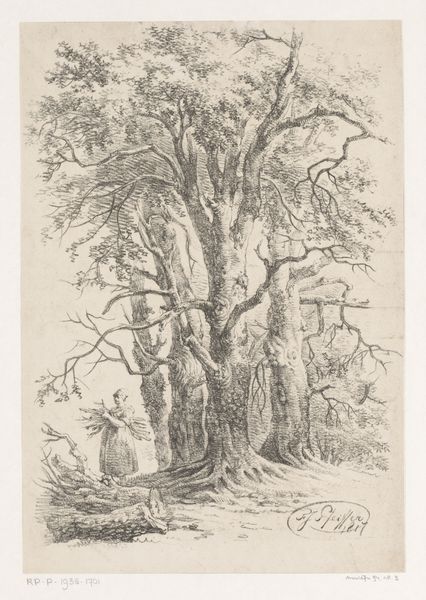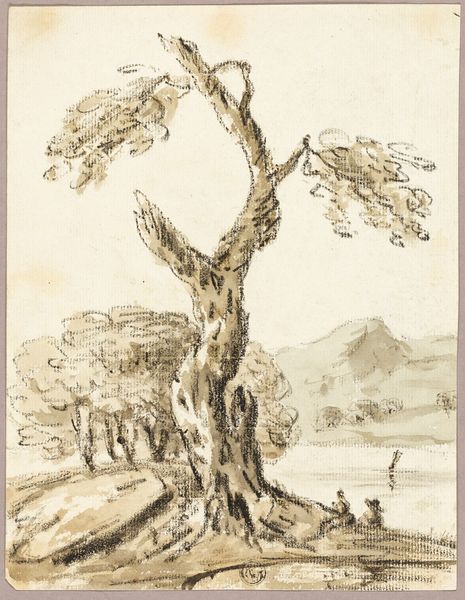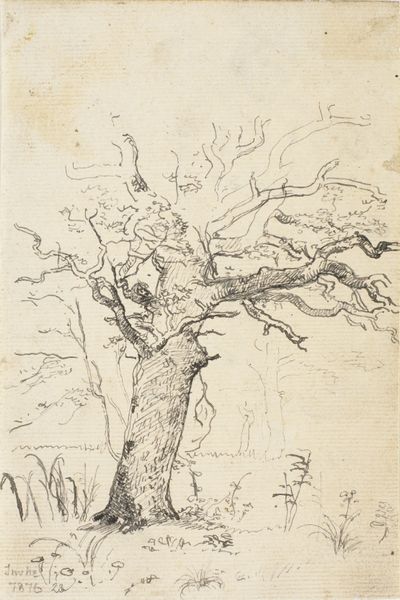
drawing, ink, pen
#
drawing
#
dutch-golden-age
#
pen sketch
#
landscape
#
ink
#
pen-ink sketch
#
pen work
#
sketchbook drawing
#
pen
#
watercolour illustration
#
realism
Dimensions: height 299 mm, width 207 mm
Copyright: Rijks Museum: Open Domain
Curator: What strikes me first is the starkness of this pen and ink sketch by Johann Heinrich Roos titled "Een knotwilg", or "A pollard willow," created sometime between 1641 and 1685. The solitary tree against a pale background almost seems to vibrate. Editor: Yes, the isolation and roughness of the trunk are very tactile, aren’t they? It feels as though one could reach out and feel the deeply furrowed bark. I'm immediately drawn to the artist's hand—you see the labor of observation in each carefully placed line. Curator: Absolutely. Roos’ mastery is in the detail. Observe how his delicate pen strokes not only capture the rough texture but also articulate the tree’s structure, leading our eye upwards to its truncated branches. The realism in the application of line weight indicates volume in this complex network of form. Editor: It's intriguing to consider the likely reality of the tree’s lifecycle in the context of Dutch agrarian practices. Pollarding was common and functional. Are we, then, looking at a study of rural labor, the harvesting of wood, even a meditation on sustainability in the 17th century? Curator: That’s a compelling thought. From a purely aesthetic perspective, it's the composition that commands attention: the verticality of the trunk offset by the chaotic spread of the branches above. Semiotically, the tree can function as a marker of temporality or perhaps a monument. Editor: Exactly! Think of the work involved in continually shaping a tree like this—the consistent, seasonal work needed. We must also not forget the materiality. The iron gall ink itself and its impact upon the paper; Roos carefully controls it. This creates the contrasts which define the light falling on this singular tree. Curator: Yes, and it's the contrast in the line work—that carefully wrought execution, in concert with composition—that creates the work's compelling visual tension. Editor: Considering the material aspects brings another layer of richness to appreciating the artist’s intention. The tree and the labor inherent in its shape become inseparable. Curator: It seems that what starts as an exploration of line becomes a document that gestures beyond the confines of form and drawing. Editor: Indeed, a nexus where process, landscape, and perhaps even economic history intertwine to grant the solitary tree, and our experience, added resonance.
Comments
No comments
Be the first to comment and join the conversation on the ultimate creative platform.
